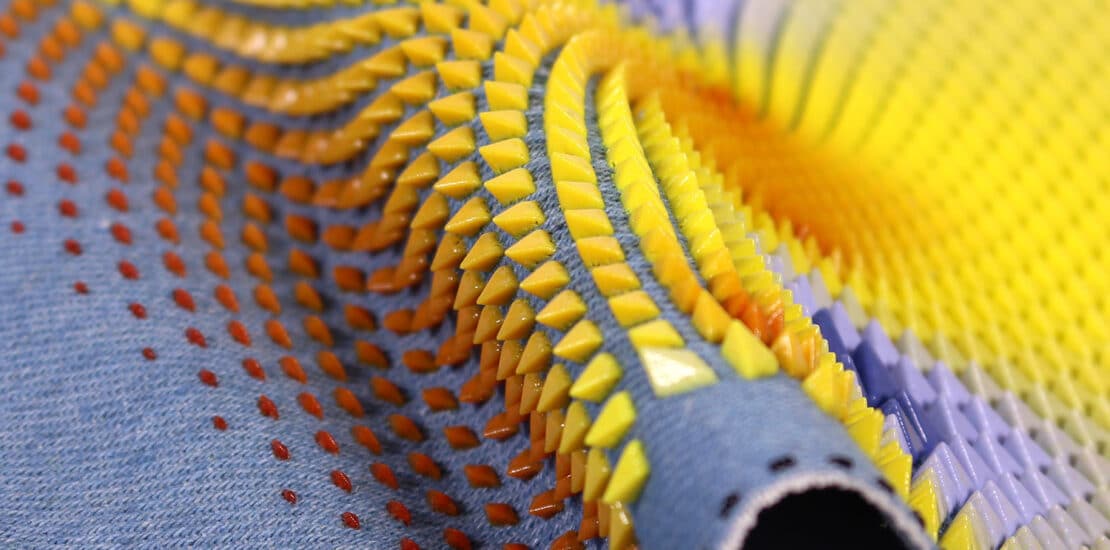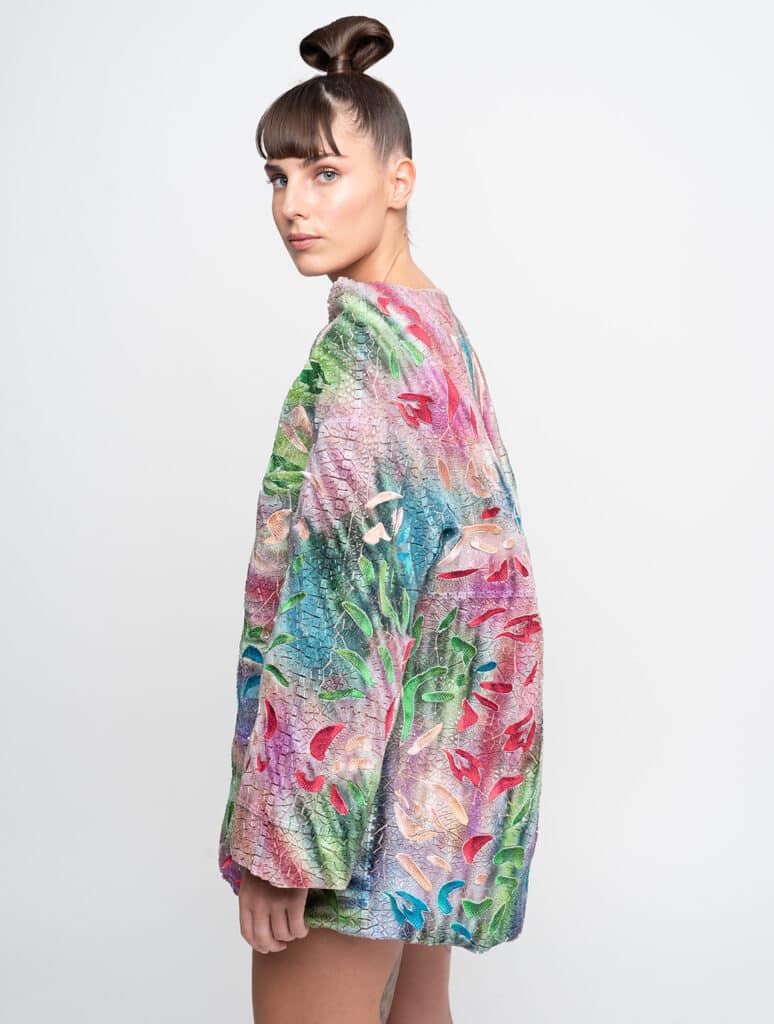- June 6, 2023
- Posted by: TheD2MCo
- Category: News

Naomi Kaempfer, creative director of art, design and fashion at Stratasys, explores “the hottest new business opportunity” for textile printers: 3D printing.
Set to be worth US$6.65bn by 2030, the digital textile printing market has gained traction in recent decades, fueled by technological advancements that have helped to increase efficiencies and drive the industry forward. Today, however, with digital printing technology now the industry standard, textile printers are having to work harder than ever to push the boundaries of creativity and achieve true product differentiation. Regardless of designs or fabrics, the end result for textile printers to date has essentially been much of the same market-wide: a two-dimensional pattern that exhibits the same mechanical properties as the substrate textile. Looking to the future, it’s clear then that the next creative and commercial move for textile printing needs to go beyond just improving current processes to truly bring textiles to life and reimagine what’s possible – which is precisely what direct-to-textile (DTT) 3D printing is now delivering.
The world of fashion and textiles is no stranger to the 3D printing process itself. 3D printed elements have been incorporated into textiles before, by first 3D printing the desired element then manually working it into an individual garment. We have seen elaborate 3D printed elements being used to elevate dresses and create show-stopping shoes for years, with esteemed designers from Iris van Herpen to Julia Koerner, Karim Rashid and Neri Oxman embracing the technology. This process, however, has for the most part been limited to the highest end of fashion and for conceptual and artistic endeavours.

Tech and Style for Textile Printers
Fortunately, new advances in the technology are now taking this process even further – both reinventing what is possible and, importantly, putting these revolutionary capabilities directly in the hands of textile printers, ultimately ushering in an entirely new era of textile printing. For the first time, we are now able to 3D print DTT, which opens up a host of new opportunities. By enabling the construction of patterns and objects directly onto textiles such as denim, cotton, polyester and linen, it is possible to build 3D printing into textile production from the outset, effectively turning fabric into a blank canvas for new visual and tactile effects.
While DTT 3D printing technology is relatively new to the market, early applications have already included decorative patterns on jeans and dresses, graphics on shoes, wearables and bags. With countless more potential creative applications still to be explored, this is merely the beginning.
Landmark pieces, such as the Greta Oto Dress designed by threeASFOUR and Travis Fitch, are showcasing how 3D printing onto textiles can create textile designs that have never been seen before. Exploring the interplay of light and fabric, the dress harnesses the lenticular effect of the 3D printed elements (printed directly onto a polyester substrate) to reflect and refract light, creating a butterfly-like shimmer – ultimately resulting in a final product that simply couldn’t be produced by any other means.
DTT 3D printing not only allows innovation in new products but can even extend a product’s life cycle by enabling used clothing and accessories to be repurposed with the addition of 3D printed elements, including customised designs and one-of-a-kind personalisation.
Perhaps one of the most topical trends is the increasing use of AI, which we’ve seen disrupt the 2D scene already. This is now extending to the 3D scene, and we can’t wait for it to penetrate the textile market and offer solutions to translate 2D designs into 3D. Top designers we’re working with in the UK, and Europe – from ZHA to Ross Lovegrove, Moooi design to Meshroom – are all embedding the AI into their design work processes, using it to support visual research and development. This allows them to verbalise and direct their design through the AI program. The AI can analyse their unique design language and the designer can then refine and rebuild it until they have reached a final version. To some, this might raise the question of whether everyone could be a designer, but AI can only go as far as the user is able to articulate their wishes. Alongside the advent of 3D printing in the textile market, this makes virtually any design possible, and the problem becomes imagining the design in the first place.
Another upcoming trend we envision emerging is the use of 3D textile printing in the entertainment industry. This is particularly big in the UK and the US, where many sets, costumes, and props are designed and produced. For the entertainment industry, everything needs to be tailor made for each unique production. Cost-effective low-volume production and aesthetic novelty are two main components of this, both of which are factors that 3D printing is undeniably able to offer.
Looking beyond the surface, the true value of this technology grants textile printers the means to deliver a differentiated, stand-out service offering and a novel design language. Changing the way they can engage with fabrics opens the door to new revenue streams and provides an all-important critical edge in a competitive market landscape.
Article written by Naomi Kaempfer, creative director of art, design and fashion at Stratasys.
